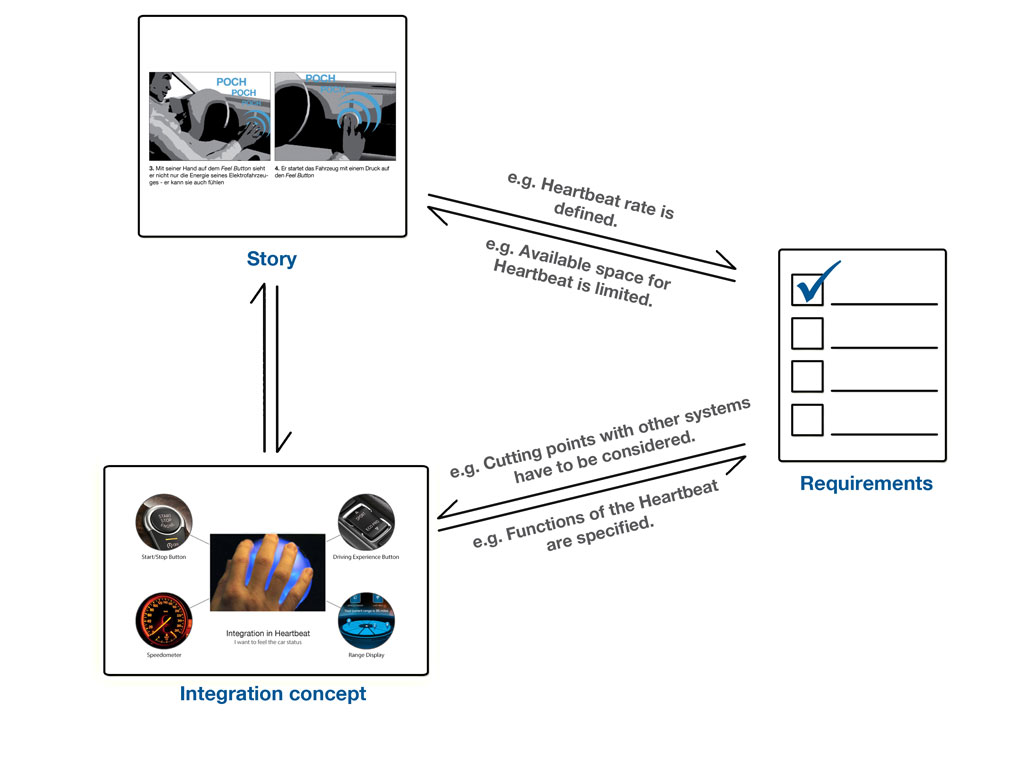Define Quantitative Requirements.
Translate the storyboard into detailed technical requirements.
Why
The previously defined qualitative requirements provide a rough framework. In the following implementation phases the components and the overall product become reality. To do this, it is necessary to specify and quantify the requirements based on the storyboard.
What.
In a continuous and iterative process, translate the storyboard into quantitative requirements and incorporate requirements in terms of the technical feasibility into the storyboard. In addition, reconcile the integration concept with the requirements.
How.
Storyboard (incl. physical experience prototype), integration concept, qualitative technical requirements, , current requirements from other areas (installation space, interfaces, production and other implementation aspects).
Translate the storyboard into quantitative technical requirements. Do this based on the previously defined qualitative requirements. This way, a connection between the intended user experience and the technical implementation is established. Check quality critical requirements (Critical to Quality - CTQs) for the experience during the implementation.
Reconcile additional requirements that are given due to the framework conditions with the storyboard. This involves, in particular, the specific technical feasibility in the areas of: installation space, interfaces, production and other implementation aspects. If the storyboard description of an interaction collides with the other requirements then adapt it accordingly. However, do not change CTQs of the storyboard.
In addition to the contents of the storyboard, translate the further developed integration concept into quantitative requirements as well. Aspects of the motive-centered integration of functions are not sufficient anymore at this point in the development process. Rather, it is necessary to implement specific requirements on usability and packaging (Display-Control Concept, visibility, signals, arrangement and size).
In the same manner as when you created the storyboard, you need to take the current requirements from other areas (installation space, interfaces, production and other implementation aspects) into account for the specification of the integration concept. Again, make sure that CTQs of the integration concept are not negatively affected by other requirements.
Quantitative technical requirements in form of a requirement list.
Insights
- Parallel to the further development of a story to a detailed storyboard, including the physical experience prototype, it is also necessary to specify the requirements.
- Listing quantitative requirements builds on the previously generated qualitative requirements.
- Requirement list (reference for a comparison of target and actual status) and storyboard (visualization of the experience goal) complement one another and are therefore used simultaniously during the further course of the development process.
References
Lindemann, U. (2009): Methodische Entwicklung technischer Produkte - Methoden flexibel und situationsgerecht anwenden. Berlin, Heidelberg: Springer






_en.jpg)
